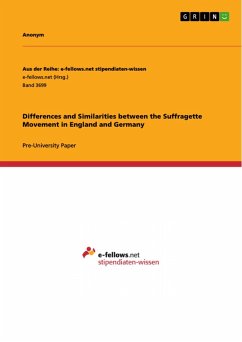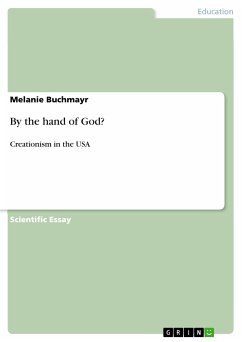Seminar paper from the year 2014 in the subject Didactics - English - Pedagogy, Literature Studies, grade: 1,3, University of Frankfurt (Main) (Institut für England- und Amerikastudien), course: The power of tests inside and outside of the classroom, language: English, abstract: In 2000, the OECD conducted the first PISA study. Students from 28 OECD-member and four OECD-nonmember states took part, among them Germany and the U.S. Germany was ranked 21st both in mathematics and science, and the 22nd in reading. It thus got an overall 21st ranking. The U.S. were ranked 20th in mathematics, 15th in science, and 16th in reading, thus ranked 17th overall. This meant an overall below score average for both countries. Besides ranking the performance of the students, the results also shed light on the correlation between socioeconomic status and academic achievement. Germany displayed the highest correlation between student performance and social background of all countries tested. In addition, student performance strongly varied between the school forms Gymnasium, Hauptschule and Realschule. Regarding educational equality, this finding challenged Germany's tripartite school system. "Socio-economic disad-vantage has a notable impact on student performance in the United States", too (cf. OECD 2011), albeit by far not as strong as in Germany. In light of the high child poverty rate in the U.S. , this finding could have been anticipated. Nevertheless, it was alarming. PISA has been criticized for its objective, methodology, and the interpretation of its results. It is, for example, problematic to test and compare the achievement of students, disregarding the school form they visit at the time of the assessment. Moreover, the fact that the students tested by PISA were schooled in completely different school systems challenges the comparability of the results. Nonetheless, PISA has a great social impact. When the results of the first PISA study were published in 2001, Germany and the U.S. conceived of them as a "shock" and reacted similarly: with major reforms of their education systems that would not have been otherwise possible. The changes were immense, particularly with regard to educational progress assessment, teacher accountability, and trans-regional comparability of educational standards. How did this affect the results of the second PISA study, which was conducted in 2003? While the nature and the purpose of both countries' reform agendas were questionable, the U.S. reforms in particular were condemned to failure. They were inadequate for improving the education system and thus the PISA results. Based on a comparison of the two reform agendas, ideas on how to adequately improve education will be presented in the conclusion.
Dieser Download kann aus rechtlichen Gründen nur mit Rechnungsadresse in A, B, BG, CY, CZ, D, DK, EW, E, FIN, F, GR, HR, H, IRL, I, LT, L, LR, M, NL, PL, P, R, S, SLO, SK ausgeliefert werden.









